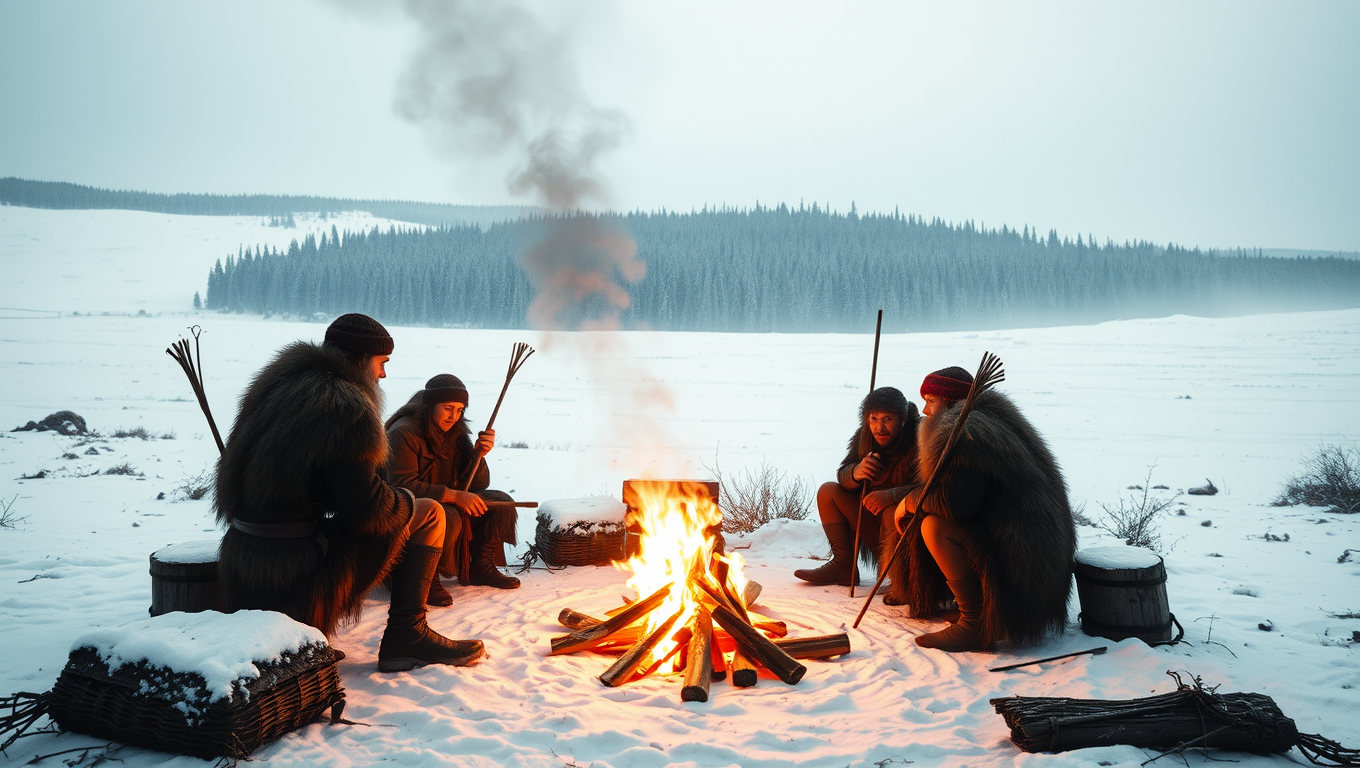While we try to keep things accurate, this content is part of an ongoing experiment and may not always be reliable.
Please double-check important details — we’re not responsible for how the information is used.
Ancient Civilizations
Sophisticated Pyrotechnology in the Ice Age: Unraveling the Mystery of Ancient Fire Use
Whether for cooking, heating, as a light source or for making tools — it is assumed that fire was essential for the survival of people in the Ice Age. However, it is puzzling that hardly any well-preserved evidence of fireplaces from the coldest period of the Ice Age in Europe has been found so far. A group of scientists has now been able to shed some light on the mystery of Ice Age fire. Their analysis of three hearths at a prehistoric site in Ukraine shows that people of the last Ice Age built different types of hearths and used mainly wood, but possibly also bones and fat, to fuel their fires.

Ancient Civilizations
Unveiling North America’s Oldest Pterosaur: A Triassic Time Capsule Reveals a Diverse Ecosystem
In the remote reaches of Arizona s Petrified Forest National Park, scientists have unearthed North America’s oldest known pterosaur a small, gull-sized flier that once soared above Triassic ecosystems. This exciting find, alongside ancient turtles and armored amphibians, sheds light on a key moment in Earth’s history when older animal groups overlapped with evolutionary newcomers. The remarkably preserved fossils, including over 1,200 specimens, offer a rare glimpse into a vibrant world just before a mass extinction reshaped life on Earth.
Ancient Civilizations
Unburying the Past: Ancient Footprints Rewrite American History
Footprints found in the ancient lakebeds of White Sands may prove that humans lived in North America 23,000 years ago — much earlier than previously believed. A new study using radiocarbon-dated mud bolsters earlier findings, making it the third line of evidence pointing to this revised timeline.
Ancient Civilizations
Debunking the Elite: New DNA Research Challenges Ancient Ireland’s Incestuous Social Hierarchy
DNA from a skull found at Newgrange once sparked theories of a royal incestuous elite in ancient Ireland, but new research reveals no signs of such a hierarchy. Instead, evidence suggests a surprisingly egalitarian farming society that valued collective living and ritual.
-

 Detectors3 months ago
Detectors3 months agoA New Horizon for Vision: How Gold Nanoparticles May Restore People’s Sight
-

 Earth & Climate4 months ago
Earth & Climate4 months agoRetiring Abroad Can Be Lonely Business
-

 Cancer4 months ago
Cancer4 months agoRevolutionizing Quantum Communication: Direct Connections Between Multiple Processors
-

 Agriculture and Food4 months ago
Agriculture and Food4 months ago“A Sustainable Solution: Researchers Create Hybrid Cheese with 25% Pea Protein”
-

 Diseases and Conditions4 months ago
Diseases and Conditions4 months agoReducing Falls Among Elderly Women with Polypharmacy through Exercise Intervention
-

 Albert Einstein4 months ago
Albert Einstein4 months agoHarnessing Water Waves: A Breakthrough in Controlling Floating Objects
-

 Chemistry3 months ago
Chemistry3 months ago“Unveiling Hidden Patterns: A New Twist on Interference Phenomena”
-

 Earth & Climate4 months ago
Earth & Climate4 months agoHousehold Electricity Three Times More Expensive Than Upcoming ‘Eco-Friendly’ Aviation E-Fuels, Study Reveals





























